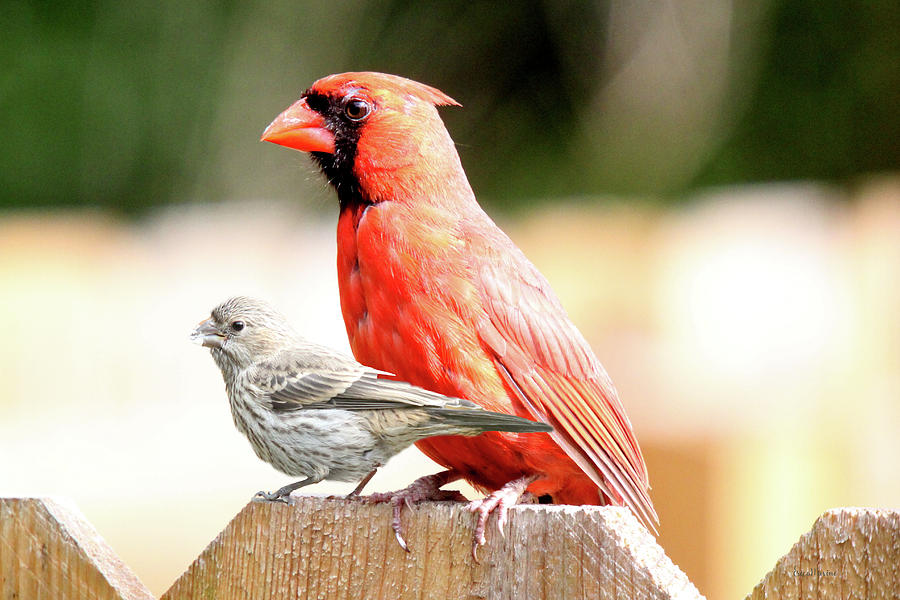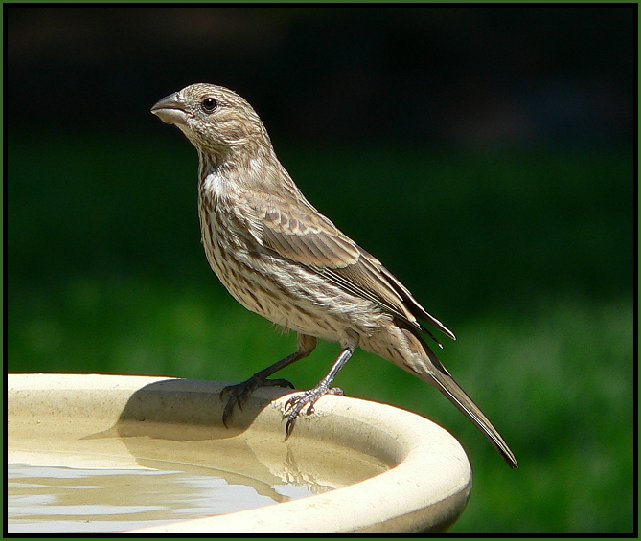Table Of Content

The female house has a very plain face, unlike the purple and Cassin’s, which both show distinct eyebrows. The female house tends to have browner underparts than the 2 as well, with blurry streaks below. The female common rosefinch looks similar, but she is drabber, with less distinct streaking below. Males perform courtship displays to attract the attention of females.
Habitat
Other finch species, such as the American Goldfinch, are also affected. The disease is spread through social contact, so keeping your bird feeders and baths clean is important. The House finch (Haemorhous mexicanus) is a North American bird in the finch family. There are estimated to be 40 million house finches across North America, making it the second-most populous finch, just behind the American goldfinch. The house finch and the other two American rosefinches are placed in the genus Haemorhous. In the event a clutch is unsuccessful due to the loss of a mate, the female would find a new mate and raise another clutch.
House Finch: Dietary Preferences
House finches are originally desert dwellers, native to the Southwest and Mexico. These birds have naturally expanded their range throughout the west, but their presence in the eastern United States is due to the pet store trade. When the trade became illegal in the 1930s, all captive house finches were released. Adult males are rosy red around the face and upper breast, with streaky brown back, belly and tail. Adult females aren’t red; they are plain grayish-brown with thick, blurry streaks and an indistinctly marked face.
Size and Shape
Susceptible to House Finch eye disease, an illness that gives them swollen eyes and leaves them lethargic. If sick birds are seen around feeders, remove feeders and clean with diluted bleach solution to reduce spread. Feeding birds will not attract birds to nest and raise a family in a bird house.
Physical Characteristics of House Finches
Both male and female house finches participate in nest site selection. They often search together, but also separately, not too far apart. Once a site has been chosen, only the female builds the nest. A highly social bird, the House Finch is rarely seen alone outside of the breeding season, and may form flocks as large as several hundred birds. House Finches feed mainly on the ground or at feeders or fruiting trees. At rest, they commonly perch on the highest point available in a tree, and flocks often perch on power lines.
After the eggs hatch, the female incubates the young for three to five days. During this time, the male continues to bring food to his mate and chicks. After the brooding period is over, both parents are involved in feeding the young, but the female’s role slowly diminishes.
In contrast, House Sparrow eggs are larger, with a cream-colored or grayish-white base and heavier brown speckling. One more general difference is leg color—finches have dark gray legs and sparrows usually have pinkish-colored legs. House Finches mostly feed on seeds, buds, fruits, and some insects, while sparrows typically eat seeds, grains, and insects as well. However, there are certain characteristics that set them apart. House Finches’ breeding season lasts from March until August 2, whereas House Sparrows’ breeding occurs typically from early April through August 3. Compared to female House Sparrows, female House Finches have overall plainer plumage with streaks of brown on their underparts.

House Finches are currently among the most widespread and common birds across the United States—but as we'll see, that wasn't always the case. These days, they can be found brightening backyards and chowing down at seed feeders from the arid Southwest to the humid cities of the Northeast. Familiar as they are, there’s plenty about these cosmopolitan birds worthy of closer attention and deeper appreciation. Fill your backyard feeders with small, black oil sunflower seed. If House Finches discover your feeders, they might bring flocks of 50 or more birds with them. Find out more about what this bird likes to eat and what feeder is best by using the Project FeederWatch Common Feeder Birds bird list.
The best thing about this species is that observing them will bring a calming and therapeutic effect to our lives. They help us connect with nature, reduce our everyday stress, and find tiny moments of tranquility. House Finches introduce you to the urban wildlife experience as they have adapted to being in close proximity to humans. Consequently, they started spreading across nearly all of the eastern United States and southern Canada, including the unforested, dry areas in the next 50 years. The Song Sparrow is one of the most adaptable, abundant, and variable species in North America.
The tails of female House Finches are also generally longer and slightly forked, as opposed to the squared-off tail of the sparrow. Sparrows have longer legs, and they’re typically paler in color. The female House Finch’s legs are shorter and a darker, grayish color 3.

In terms of size, female House Finches are slightly smaller, measuring about 5 inches, while sparrows are around 6 inches in length. Many sparrows also tend to have head or eye stripes, whereas female House Finches have rather plain heads and faces. Identifying female House Finches and sparrows is easier when you keep several physical differences in mind, which we’ll dive into below. House finches also engage in communal roosting, where multiple individuals gather together in a single location to spend the night. These communal roosts can consist of hundreds or even thousands of birds, providing safety in numbers and potentially offering protection from predators.
These songbird species possess identical-looking conical beaks. The females are solely responsible for the construction of these nests, which can often take as little as 2 days. The females tend to go for the males with the most dazzling red colors as it is an indication of being properly fed. As a result, these males will be capable of finding more food for them. Sometimes, this bright red color runs through the back of the bird and extends toward the belly and in between the wings.
Is This House Finch Feeling The Bern? - National Audubon Society
Is This House Finch Feeling The Bern?.
Posted: Mon, 28 Mar 2016 07:00:00 GMT [source]
However, there can be slight variations in weight depending on factors such as age, sex, and overall health. These birds have a compact and robust build, enabling them to thrive in various habitats and climates. The beak of a house finch is cone-shaped and slightly curved, enabling them to efficiently crack open seeds. This adaptation is crucial as seeds make up a significant portion of their . The beak’s size and shape also play a role in determining the bird’s ability to access certain food sources. On the contrary, the buzzy songs are usually heard during the breeding season.
Female house finches are unlikely to raise a successful clutch alone. During incubation and brooding, the female depends greatly on the male to provide food. If the male dies, the female would have to forage frequently for herself. Leaving the nest for long periods, particularly during the sensitive stages of incubation or brooding, would likely result in loss of the clutch. The easiest way to tell if a house finch is male or female is to look at its plumage, and specifically the coloration.
Adult males are rosy red around the face and upper breast, with a streaky brown back, belly, and tail. Flocks, usually families of finches, often dominate feeders in large enough numbers to chase away house sparrows. House Finches will come to bird feeders that offer up sunflower seeds and are generally more likely to eat at bird feeders than sparrows. Birds in general have complex social interactions and relationships with each other, and house finches are no exception. They interact with other birds in various ways, including competition for resources and engaging in social behaviors. In urban settings, House Finches can be seen frequenting parks, gardens, and residential areas.
Gregarious and social, House Finches are found in noisy groups that are hard to miss if present. Look for House Finches feeding on the ground or at bird feeders, or perching high in nearby trees. Purple Finches aren’t purple, and House Finches don’t stick to houses. But that’s only the start of the confusion around these two doppelgangers. A red and brown bird at your feeder might be either one throughout much of the United States.

No comments:
Post a Comment